Looking for research funding can be a daunting task, especially when you are starting out. A great way to improve grant-writing skills is to get inspired by winning research proposal examples.
To assist you in writing a competitive proposal, I have curated a collection of real-life research proposal examples from various scientific disciplines. These examples will allow you to gain inspiration about the way research proposals are structured and written.
Structure of a Research Proposal
A research proposal serves as a road-map for a project, outlining the objectives, methodology, resources, and expected outcomes. The main goal of writing a research proposal is to convince funding agency of the value and feasibility of a research project. But a proposal also helps scientists themselves to clarify their planned approach.
While the exact structure may vary depending on the science field and institutional guidelines, a research proposal typically includes the following sections: Problem, Objectives, Methodology, Resources, Participants, Results&Impact, Dissemination, Timeline, and Budget. I will use this structure for the example research proposals in this article.
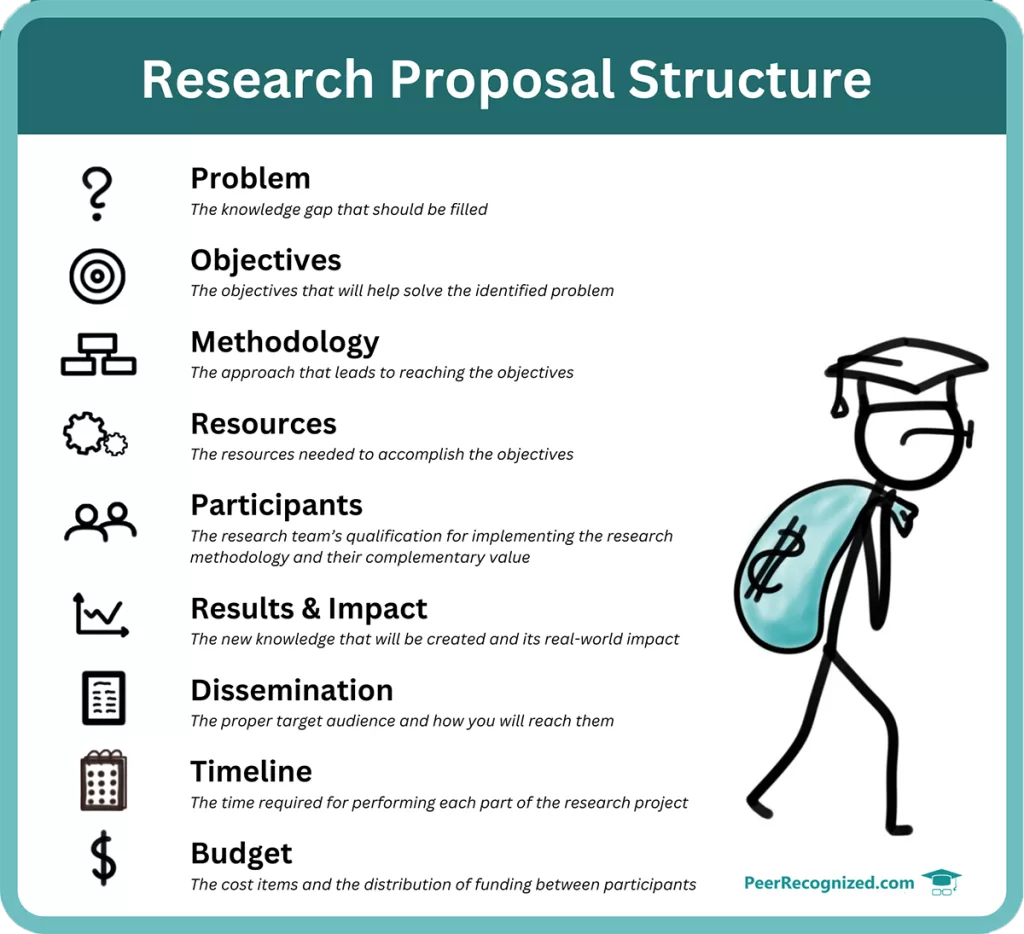
Here is a brief description of what each of the nine proposal sections should hold.
Title
A concise and informative title that captures the essence of the research proposal. Sometimes an abstract is required that briefly summarizes the proposed project.

Clearly define the research problem or gap in knowledge that the study aims to address. Present relevant background information and cite existing literature to support the need for further investigation.

Objectives
State the specific objectives and research questions that the study seeks to answer. These objectives should be clear, measurable, and aligned with the problem statement.

Methodology
Describe the research design, methodology, and techniques that will be employed to collect and analyze data. Justify your chosen approach and discuss its strengths and limitations.

Resources
Outline the resources required for the successful execution of the research project, such as equipment, facilities, software, and access to specific datasets or archives.

Participants
Describe the research team’s qualification for implementing the research methodology and their complementary value

Results and Impact
Describe the expected results, outcomes, and potential impact of the research. Discuss how the findings will contribute to the field and address the research gap identified earlier.

Dissemination
Explain how the research results will be disseminated to the academic community and wider audiences. This may include publications, conference presentations, workshops, data sharing or collaborations with industry partners.

Timeline
Develop a realistic timeline that outlines the major milestones and activities of the research project. Consider potential challenges or delays and incorporate contingency plans.

Budget
Provide a detailed budget estimate, including anticipated expenses for research materials, equipment, participant compensation, travel, and other relevant costs. Justify the budget based on the project’s scope and requirements.
Consider that the above-mentioned proposal headings can be called differently depending on the funder’s requirements. However, you can be sure in one proposal’s section or another each of the mentioned sections will be included. Whenever provided, always use the proposal structure as required by the funding agency.
Research Proposal template download
This research proposal template includes the nine headings that we just discussed. For each heading, a key sentence skeleton is provided to help you to kick-start the proposal writing process.
Real-Life Research Proposal Examples
Proposals can vary from field to field so I will provide you with research proposal examples proposals in four main branches of science: social sciences, life sciences, physical sciences, and engineering and technology. For each science field, you will be able to download real-life winning research proposal examples.
To illustrate the principle of writing a scientific proposal while adhering to the nine sections I outlined earlier, for each discipline I will also provide you with a sample hypothetical research proposal. These examples are formulated using the key sentence structure that is included in the download template.
In case the research proposal examples I provide do not hold exactly what you are looking for, use the Open Grants database. It holds approved research proposals from various funding agencies in many countries. When looking for research proposals examples in the database, use the filer to search for specific keywords and organize the results to view proposals that have been funded.
Research Proposals Examples in Social Sciences
Here are real-life research proposal examples of funded projects in social sciences.
Here is an outline of a hypothetical Social Sciences research proposal that is structured using the nine proposal sections we discussed earlier. This proposal example is produced using the key sentence skeleton that you will access in the proposal template.
Title
The Influence of Social Media on Political Participation among Young Adults

Problem
Social media platforms have become prominent spaces for political discussions and information sharing. However, the impact of social media on political participation among young adults remains a topic of debate.

Objectives
With the project, we aim to establish the relationship between social media usage and political engagement among young adults. To achieve this aim, we have three specific objectives:
- Examine the association between social media usage patterns and various forms of political participation, such as voting, attending political rallies, and engaging in political discussions.
- Investigate the role of social media in shaping political attitudes, opinions, and behaviors among young adults.
- Provide evidence-based recommendations for utilizing social media platforms to enhance youth political participation.

Methodology
During the project, a mixed methods approach, combining quantitative surveys and qualitative interviews will be used to determine the impact of social media use on youth political engagement. In particular, surveys will collect data on social media usage, political participation, and attitudes. Interviews will provide in-depth insights into participants’ experiences and perceptions.

Resources
The project will use survey software, transcription tools, and statistical analysis software to statistically evaluate the gathered results. The project will also use project funding for participant compensation.

Participants
Principal investigator, Jane Goodrich will lead a multidisciplinary research team comprising social scientists, political scientists, and communication experts with expertise in political science and social media research.

Results and Impact
The project will contribute to a better understanding of the influence of social media on political participation among young adults, including:
- inform about the association between social media usage and political participation among youth.
- determine the relationship between social media content and political preferences among youth.
- provide guidelines for enhancing youth engagement in democratic processes through social media use.

Dissemination
We will disseminate the research results within policymakers and NGOs through academic publications in peer-reviewed journals, presentations at relevant conferences, and policy briefs.

Timeline
The project will start will be completed within two years and for the first two objectives a periodic report will be submitted in months 12 and 18.

Budget
The total eligible project costs are 58,800 USD, where 15% covers participant recruitment and compensation, 5% covers survey software licenses, 55% are dedicated for salaries, and 25% are intended for dissemination activities.
Research Proposal Examples in Life Sciences
Here are real-life research project examples in life sciences.
Here is a hypothetical research proposal example in Life Sciences. Just like the previous example, it consists of the nine discussed proposal sections and it is structured using the key sentence skeleton that you will access in the proposal template.
Title
Investigating the Role of Gut Microbiota in Obesity and Metabolic Syndrome (GUT-MET)

Problem
Obesity and metabolic syndrome pose significant health challenges worldwide, leading to numerous chronic diseases and increasing healthcare costs. Despite extensive research, the precise mechanisms underlying these conditions remain incompletely understood. A critical knowledge gap exists regarding the role of gut microbiota in the development and progression of obesity and metabolic syndrome.

Objectives
With the GUT-MET project, we aim to unravel the complex interactions between gut microbiota and obesity/metabolic syndrome. To achieve this aim, we have the following specific objectives:
- Investigate the composition and diversity of gut microbiota in individuals with obesity and metabolic syndrome.
- Determine the functional role of specific gut microbial species and their metabolites in the pathogenesis of obesity and metabolic syndrome.

Methodology
During the project, we will employ the following key methodologies:
- Perform comprehensive metagenomic and metabolomic analyses to characterize the gut microbiota and associated metabolic pathways.
- Conduct animal studies to investigate the causal relationship between gut microbiota alterations and the development of obesity and metabolic syndrome.

Resources
The project will benefit from state-of-the-art laboratory facilities, including advanced sequencing and analytical equipment, as well as access to a well-established cohort of participants with obesity and metabolic syndrome.

Participants
Dr. Emma Johnson, a renowned expert in gut microbiota research and Professor of Molecular Biology at the University of PeerRecognized, will lead the project. Dr. Johnson has published extensively in high-impact journals and has received multiple research grants focused on the gut microbiota and metabolic health.

Results and Impact
The project will deliver crucial insights into the role of gut microbiota in obesity and metabolic syndrome. Specifically, it will:
- Identify microbial signatures associated with obesity and metabolic syndrome for potential diagnostic and therapeutic applications.
- Uncover key microbial metabolites and pathways implicated in disease development, enabling the development of targeted interventions.

Dissemination
We will actively disseminate the project results within the scientific community, healthcare professionals, and relevant stakeholders through publications in peer-reviewed journals, presentations at international conferences, and engagement with patient advocacy groups.

Timeline
The project will be executed over a period of 36 months. Key milestones include data collection and analysis, animal studies, manuscript preparation, and knowledge transfer activities.

Budget
The total eligible project costs are $1,500,000, with the budget allocated for 55% personnel, 25% laboratory supplies, 5% data analysis, and 15% knowledge dissemination activities as specified in the research call guidelines.
Research Proposals Examples in Natural Sciences
Here are real-life research proposal examples of funded projects in natural sciences.
Here is a Natural Sciences research proposal example that is structured using the same nine sections. I created this proposal example using the key sentence skeleton that you will access in the proposal template.
Title
Assessing the Impact of Climate Change on Biodiversity Dynamics in Fragile Ecosystems (CLIM-BIODIV)

Problem
Climate change poses a significant threat to global biodiversity, particularly in fragile ecosystems such as tropical rainforests and coral reefs. Understanding the specific impacts of climate change on biodiversity dynamics within these ecosystems is crucial for effective conservation and management strategies. However, there is a knowledge gap regarding the precise mechanisms through which climate change influences species composition, population dynamics, and ecosystem functioning in these vulnerable habitats.

Objectives
With the CLIM-BIODIV project, we aim to assess the impact of climate change on biodiversity dynamics in fragile ecosystems. To achieve this aim, we have the following specific objectives:
- Investigate how changes in temperature and precipitation patterns influence species distributions and community composition in tropical rainforests.
- Assess the effects of ocean warming and acidification on coral reef ecosystems, including changes in coral bleaching events, species diversity, and ecosystem resilience.

Methodology
During the project, we will employ the following key methodologies:
- Conduct field surveys and employ remote sensing techniques to assess changes in species distributions and community composition in tropical rainforests.
- Utilize experimental approaches and long-term monitoring data to evaluate the response of coral reefs to varying temperature and pH conditions.

Resources
The project will benefit from access to field sites in ecologically sensitive regions, advanced remote sensing technology, and collaboration with local conservation organizations to facilitate data collection and knowledge sharing.

Participants
Dr. Alexander Chen, an established researcher in climate change and biodiversity conservation, will lead the project. Dr. Chen is a Professor of Ecology at the University of Peer Recognized, with a track record of three Nature publications and successful grant applications exceeding 25 million dollars.

Results and Impact
The project will provide valuable insights into the impacts of climate change on biodiversity dynamics in fragile ecosystems. It will:
- Enhance our understanding of how tropical rainforest communities respond to climate change, informing targeted conservation strategies.
- Contribute to the identification of vulnerable coral reef ecosystems and guide management practices for their protection and resilience.

Dissemination
We will disseminate the project results to the scientific community, conservation practitioners, and policymakers through publications in reputable journals, participation in international conferences, and engagement with local communities and relevant stakeholders.

Timeline
The project will commence on March 1, 2024, and will be implemented over a period of 48 months. Key milestones include data collection and analysis, modeling exercises, stakeholder engagement, and knowledge transfer activities. These are summarized in the Gantt chart.

Budget
The total eligible project costs are $2,000,000, with budget allocation for research personnel, fieldwork expenses, laboratory analyses, modeling software, data management, and dissemination activities.
Research Proposal Examples in Engineering and Technology
Here are real-life research proposal examples of funded research projects in the field of science and technology.
| Funder | Title |
|---|---|
| US Geological Survey (USGS) (Mendenhall Postdoctoral Research Fellowship) | Using Integrated Population Modelling in Decision-support Tools to Connect Science and Decision Makers |
| NovoNordiskFonden (Data Science Research Infrastructure Grant) | A framework for an open and scalable infrastructure for health data exemplified by the DD2 initiative |
| Mellon Foundation | Exploring Hidden Costs of Open Infrastructure |
| NASA (ROSES E.7 (Support for Open Source Tools, Frameworks, and Libraries)) | Sustaining the Astropy Project |
Here is a hypothetical Engineering and Technology research proposal example that is structured using the same nine proposal sections we discussed earlier. I used the key sentence skeleton available in the proposal template to produce this example.
Title
Developing Sustainable Materials for Energy-Efficient Buildings (SUST-BUILD)

Problem
The construction industry is a major contributor to global energy consumption and greenhouse gas emissions. Addressing this issue requires the development of sustainable materials that promote energy efficiency in buildings. However, there is a need for innovative engineering solutions to overcome existing challenges related to the performance, cost-effectiveness, and scalability of such materials.

Objectives
With the SUST-BUILD project, we aim to develop sustainable materials for energy-efficient buildings. Our specific objectives are as follows:
- Design and optimize novel insulating materials with enhanced thermal properties and reduced environmental impact.
- Develop advanced coatings and surface treatments to improve the energy efficiency and durability of building envelopes.

Methodology
During the project, we will employ the following key methodologies:
- Conduct extensive material characterization and simulation studies to guide the design and optimization of insulating materials.
- Utilize advanced coating techniques and perform full-scale testing to evaluate the performance and durability of building envelope treatments.

Resources
The project will benefit from access to state-of-the-art laboratory facilities, including material testing equipment, thermal analysis tools, and coating application setups. Collaboration with industry partners will facilitate the translation of research findings into practical applications.

Participants
Dr. Maria Rodriguez, an experienced researcher in sustainable materials and building technologies, will lead the project. Dr. Rodriguez holds a position as Associate Professor in the Department of Engineering at Peer Recognized University and has a strong publication record and expertise in the field.

Results and Impact
The project will deliver tangible outcomes for energy-efficient buildings. It will:
- Develop sustainable insulating materials with superior thermal performance, contributing to reduced energy consumption and greenhouse gas emissions in buildings.
- Introduce advanced coatings and surface treatments developed from sustainable materials that enhance the durability and energy efficiency of building envelopes, thereby improving long-term building performance.

Dissemination
We will disseminate project results to relevant stakeholders, including industry professionals, architects, and policymakers. This will be accomplished through publications in scientific journals, presentations at conferences and seminars, and engagement with industry associations.

Timeline
The project will commence on September 1, 2024, and will be implemented over a period of 36 months. Key milestones include material development and optimization, performance testing, prototype fabrication, and knowledge transfer activities. The milestones are summarized in the Gantt chart.

Budget
The total eligible project costs are $1,800,000. The budget will cover personnel salaries (60%), materials and equipment (10%), laboratory testing (5%), prototyping (15%), data analysis (5%), and dissemination activities (5%) as specified in the research call guidelines.
Final Tips for Writing an Winning Research Proposal
Come up with a good research idea
Ideas are the currency of research world. I have prepared a 3 step approach that will help you to come up with a research idea that is worth turning into a proposal. You can download the Research Idea Generation Toolkit in this article.
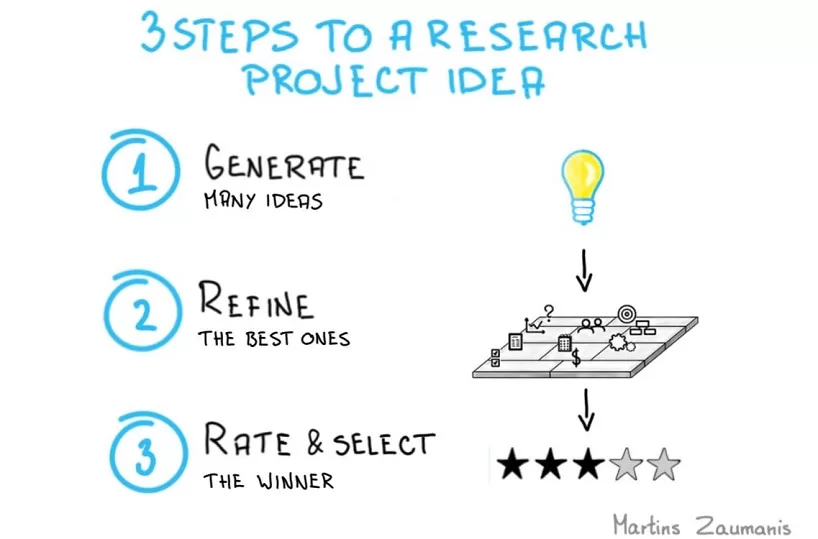
Start with a strong research outline
Before even writing one sentence of the research proposal, I suggest you use the Research Project Canvas. It will help you to first come up with different research ideas and then choose the best one for writing a full research proposal.

Tailor to the requirements of the project funder
Treat the submission guide like a Monk treats the Bible and follow its strict requirements to the last detail. The funder might set requirements for the topic, your experience, employment conditions, host institution, the research team, funding amount, and so forth.
What you would like to do in the research is irrelevant unless it falls within the boundaries defined by the funder.
Make the reviewer’s job of finding flaws in your proposal difficult by ensuring that you have addressed each requirement clearly. If applicable, you can even use a table with requirements versus your approach. This will make your proposed approach absolutely evident for the reviewers.
Before submitting, assess your proposal using the criteria reviewers have to follow.
Conduct thorough background research
Before writing your research proposal, conduct comprehensive background research to familiarize yourself with existing literature, theories, and methodologies related to your topic. This will help you identify research gaps and formulate research questions that address these gaps. You will also establish competence in the eyes of reviewers by citing relevant literature.
Be concise and clear
Define research questions that are specific, measurable, and aligned with the problem statement.
If you think the reviewers might be from a field outside your own, avoid unnecessary jargon or complex language to help them to understand the proposal better.
Be specific in describing the research methodology. For example, include a brief description of the experimental methods you will rely upon, add a summary of the materials that you are going to use, attach samples of questionnaires that you will use, and include any other proof that demonstrates the thoroughness you have put into developing the research plan. Adding a flowchart is a great way to present the methodology.
Create a realistic timeline and budget
Develop a realistic project timeline that includes key milestones and activities, allowing for potential challenges or delays. Similarly, create a detailed budget estimate that covers all anticipated expenses, ensuring that it aligns with the scope and requirements of your research project. Be transparent and justify your budget allocations.
Demonstrate the significance and potential impact of the research
Clearly articulate the significance of your research and its potential impact on the field. Discuss how your findings can contribute to theory development, practical applications, policy-making, or other relevant areas.
Pay attention to formatting and style guidelines
Follow the formatting and style guidelines provided by your institution or funding agency. Pay attention to details such as font size, margins, referencing style, and section headings. Adhering to these guidelines demonstrates professionalism and attention to detail.
Take a break before editing
After preparing the first draft, set it aside for at least a week. Then thoroughly check it for logic and revise, revise, revise. Use the proposal submission guide to review your proposal against the requirements. Remember to use grammar checking tools to check for errors.
Finally, read the proposal out loud. This will help to ensure good readability.
Seek feedback
Share your proposal with mentors, colleagues, or members of your research community to receive constructive feedback and suggestions for improvement. Take these seriously since they provide a third party view of what is written (instead of what you think you have written).
Conclusion
Reviewing good examples is one of the best ways to learn a new skill. I hope that the research proposal examples in this article will be useful for you to get going with writing your own research proposal.
Have fun with the writing process and I hope your project gets approved!
Learning from research proposal examples alone is not enough
The research proposal examples I provided will help you to improve your grant writing skills. But learning from example proposals alone will take you a rather long time to master writing winning proposals.
To write a winning research proposal, you have to know how to add that elusive X-Factor that convinces the reviewers to move your proposal from the category “good” to the category “support”. This includes creating self-explanatory figures, creating a budget, collaborating with co-authors, and presenting a convincing story.
To write a research proposal that maximizes your chances of receiving research funding, read my book “Write a Winning Research Proposal“.
This isn’t just a book. It’s a complete research proposal writing toolkit that includes a project ideation canvas, budget spreadsheet, project rating scorecard, virtual collaboration whiteboard, proposal pitch formula, graphics creation cheat sheet, review checklist and other valuable resources that will help you succeed.
Author

Hey! My name is Martins Zaumanis and I am a materials scientist in Switzerland (Google Scholar). As the first person in my family with a PhD, I have first-hand experience of the challenges starting scientists face in academia. With this blog, I want to help young researchers succeed in academia. I call the blog “Peer Recognized”, because peer recognition is what lifts academic careers and pushes science forward.
Besides this blog, I have written the Peer Recognized book series and created the Peer Recognized Academy offering interactive online courses.


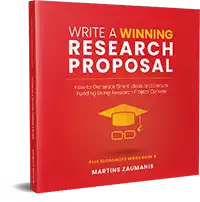
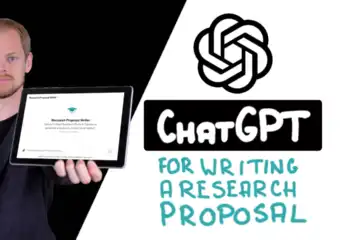
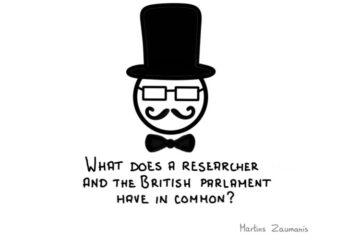



Hi Martins, I’ve recently discovered your content and it is great. I will be implementing much of it into my workflow, as well as using it to teach some graduate courses!
I noticed that a materials science-focused proposal could be a very helpful addition.